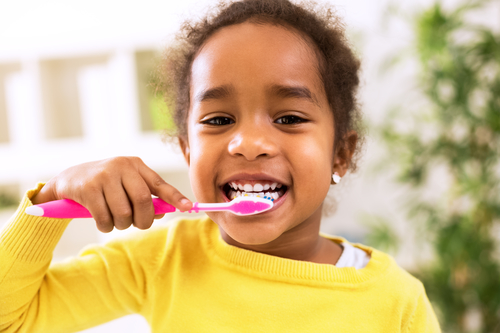
Getting your kids engaged in understanding the importance of their dental health can be difficult. Luckily, Hinsdale Dentistry rounded up our favorite dental science experiments that will surely be a hit with your young scientists. As a bonus, these activities will also help them to learn about the importance of brushing and flossing their teeth.
Reinforce the importance of proper oral hygiene with these easy and fun activities to encourage lifelong oral health for you and your little scientists.
Tips For Successful Experiments
Conducting science experiments is always a hit with kids. These activities are ideal for children age five and older. The following experiments are a great way for your children to see the effects that dental plaque and acid can have on our teeth. Always conduct these experiments under parental supervision. Not only will it encourage safety, but you may learn a thing or two as a parent too!
Learning Brush in an “Egg-cellent” Way
Teach your kids how important brushing their teeth is with this fun egg experiment.
You’ll need:
- Hard-boiled eggs
- Various liquids such as dark soda, apple juice, and grape juice
- Toothbrush
- Toothpaste
- Screwdriver
Step 1: Soak hard-boiled eggs in a liquid of choice. Let them soak for several hours until the eggs are stained a color. The eggs will represent teeth before they are brushed.
Step 2: Let your little scientist take the toothbrush and scrub away. It’s also great to show the difference toothpaste can make when cleaning your teeth Vs. just water.
How To Floss For Healthy Teeth
You’ll need:
- Egg carton
- Hairbrush
- Black permanent marker
- Yarn
- Scraps of tissue paper
- Aluminum foil
Step 1: Take an egg carton, and tip it upside down. Next, place items such as yarn and scraps of tissue paper between the egg holders to represent left-behind food in the teeth. Mark one of the “teeth” with a black mark to represent a cavity.
Step 2: Explain that the egg carton represents the inside of their mouth. Let your little scientist take a hairbrush and try to “brush away” the “debris” from the teeth using back and forth motions only.
Step 3: It won’t take long for your scientist to realize that they won’t be able to get it all with just the hairbrush.
Step 4: Using a piece of yarn, show your scientist how to correctly floss by moving the yard down one side of the tooth and up the other. Let them practice using the egg carton.
Step 5: Once the egg carton has been cleaned, let your scientist floss their teeth just as they practiced on the carton.
Egg In Vinegar
The egg in vinegar experiment is a classic. It can be used as a followup or with conjunction to the egg boiled in a liquid experiment to show your child how acid interacts with calcium to cause tooth decay. The chemical reaction caused by the two substances interacting is very similar to what happens between the acid in your mouth and your teeth.
You’ll need:
- Hard-boiled eggs
- A clear plastic cup
- Vinegar
- 48 hours
Step 1: If your scientist doesn’t already know that the hard outside of their teeth is called enamel, this is a great opportunity to explain how enamel works. Let your child examine a hard-boiled egg, even letting them smash it and remove the shell.
Step 2: Ask your scientist:
- What does the shell do for the egg? (protects the soft inside)
- Is the egg similar to your teeth?
- Why do you think your teeth are covered in enamel?
- What would happen if your enamel becomes damaged?
Step 3: Place the hard-boiled egg in a clear cup or jaw and fill it with white vinegar.
Step 4: Cover the top of the container.
Step 5: Observe the egg on day one. The egg should be covered in bubbles.
Step 6: Continue to observe the egg for another day or two.
Step 7: Remove the cover from the cup and drain the vinegar. Allow your child to touch the egg. The shell should be soft and pitted, if not completely dissolved.
Tying These Experiments To Dental Health
Hinsdale Dentistry recommends taking the time to explain to your scientist what is happening before, during and after each experiment, and how it relates to their oral health. Although our teeth may not react as quickly to the elements as an egg, there are similarities in what happens to your teeth and the eggs. These experiments can sometimes be upsetting to some children, so be sure to reassure your child that their teeth won’t be “eaten” when they eat foods or drink liquids.
Do you have another favorite dental health experiment? Let Hinsdale Dentistry know at your child’s next checkup!